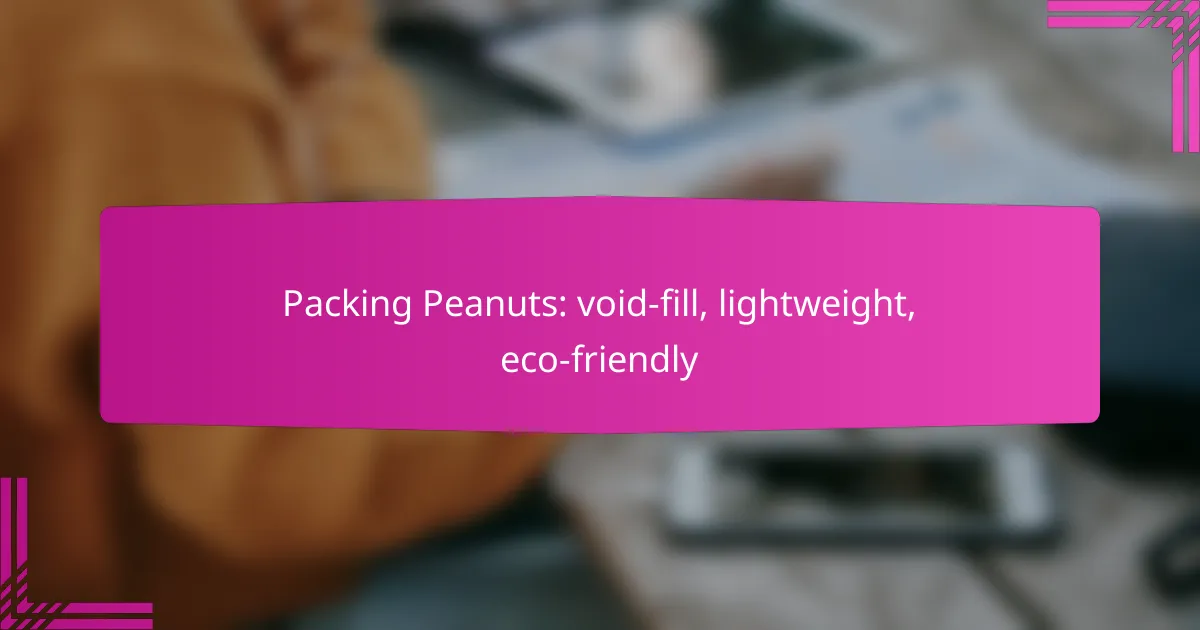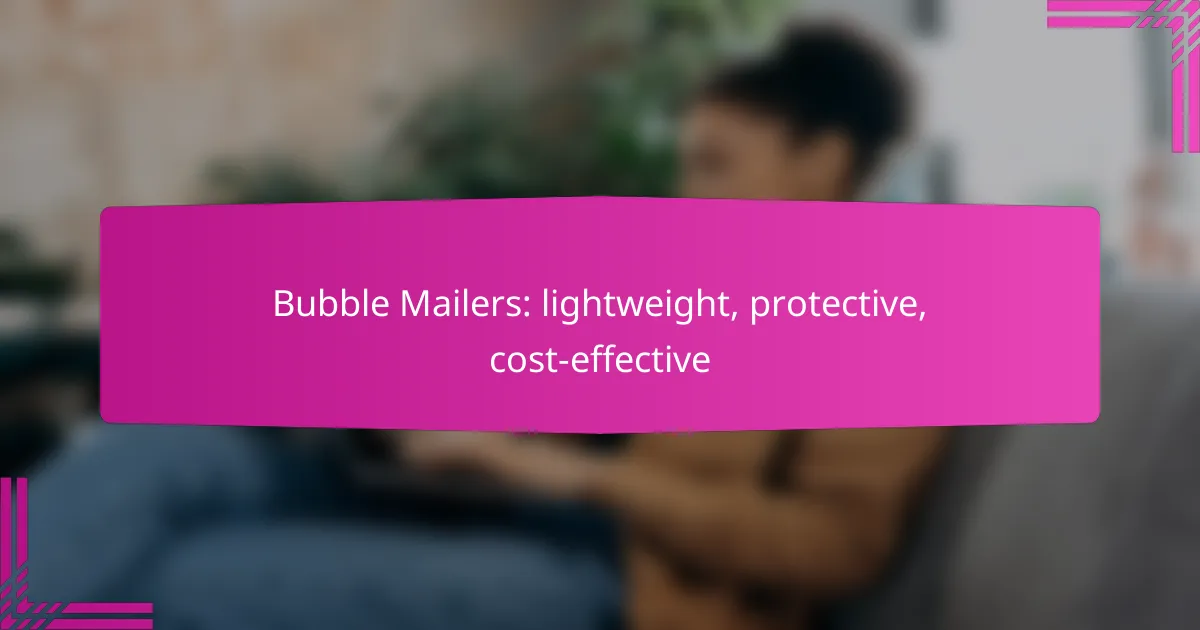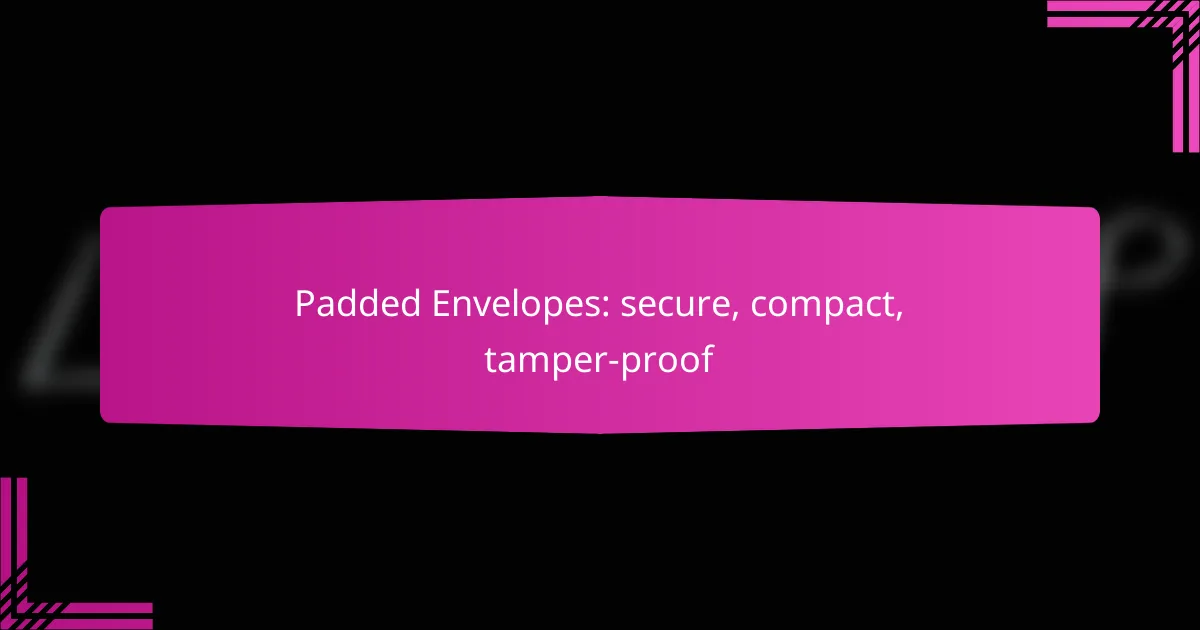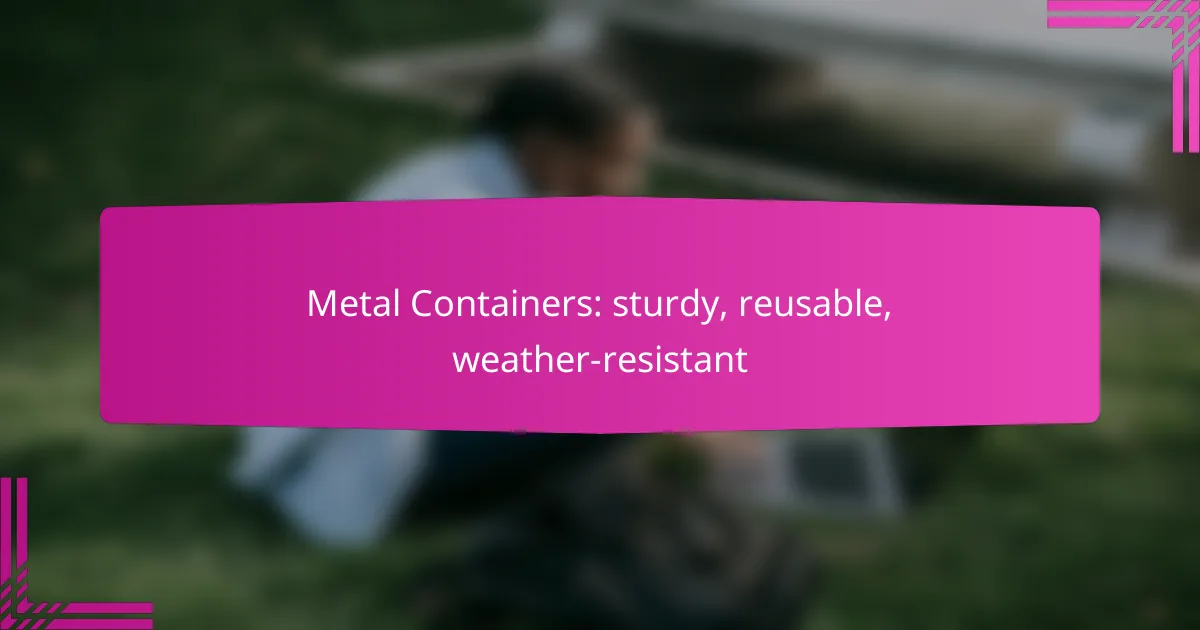Packing peanuts are lightweight, foam-like materials designed to fill voids in packaging, offering essential cushioning and protection for fragile items during shipping. Their unique shape allows them to conform around products, preventing movement and damage. Eco-friendly options are available, including biodegradable and recyclable varieties, which help reduce environmental impact while maintaining effective void-fill capabilities.
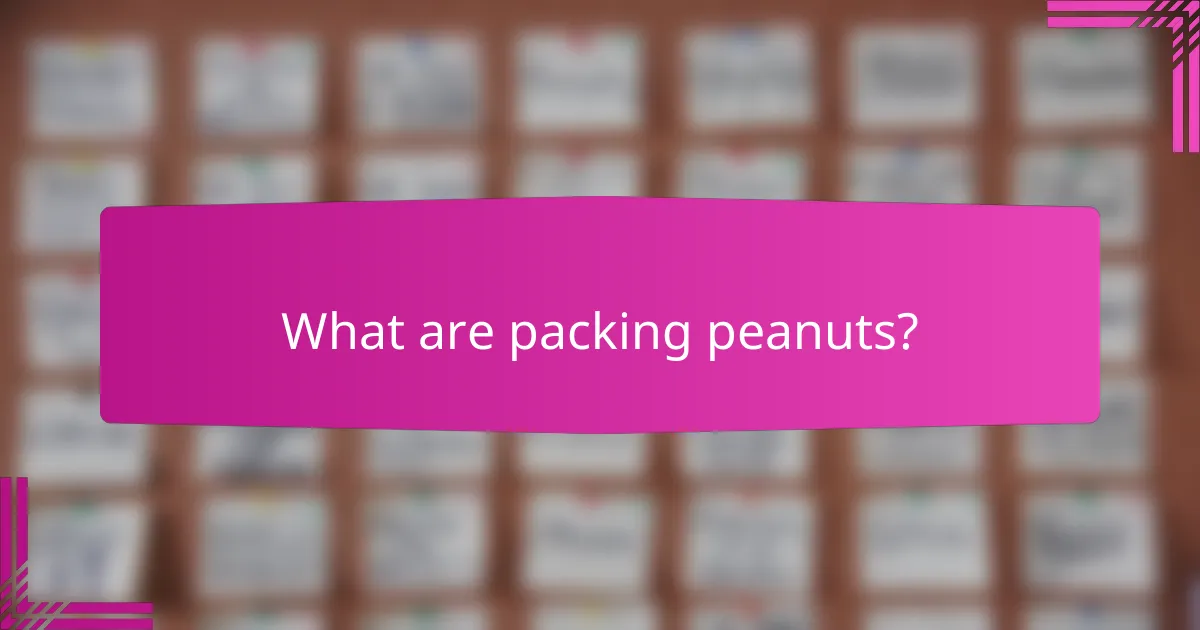
What are packing peanuts?
Packing peanuts are lightweight, foam-like materials used to fill empty spaces in packaging, providing cushioning and protection for fragile items during shipping. They help prevent damage by absorbing shock and minimizing movement within boxes.
Definition and purpose
Packing peanuts serve as void-fill materials that occupy empty space in shipping boxes, ensuring that items remain secure during transit. Their primary purpose is to provide cushioning, protecting products from impacts and vibrations that could cause damage.
By using packing peanuts, businesses can reduce the risk of returns due to damaged goods, ultimately saving costs and improving customer satisfaction. They are particularly useful for shipping delicate items such as glassware, electronics, and collectibles.
Types of packing peanuts
There are two main types of packing peanuts: traditional styrofoam peanuts and biodegradable peanuts. Styrofoam peanuts are lightweight and effective at cushioning but are not environmentally friendly. In contrast, biodegradable packing peanuts are made from natural materials like cornstarch and dissolve in water, making them a more eco-friendly option.
When choosing packing peanuts, consider the environmental impact and the specific needs of your products. Biodegradable options may be slightly more expensive but can enhance your brand’s sustainability efforts.
Common materials used
Common materials for packing peanuts include expanded polystyrene (EPS) for traditional options and starch-based materials for biodegradable varieties. EPS peanuts are known for their durability and lightweight properties, making them a popular choice in the shipping industry.
Biodegradable peanuts, on the other hand, break down naturally and are often preferred by environmentally conscious consumers. When selecting packing peanuts, evaluate the trade-offs between cost, cushioning effectiveness, and environmental impact to make an informed decision.
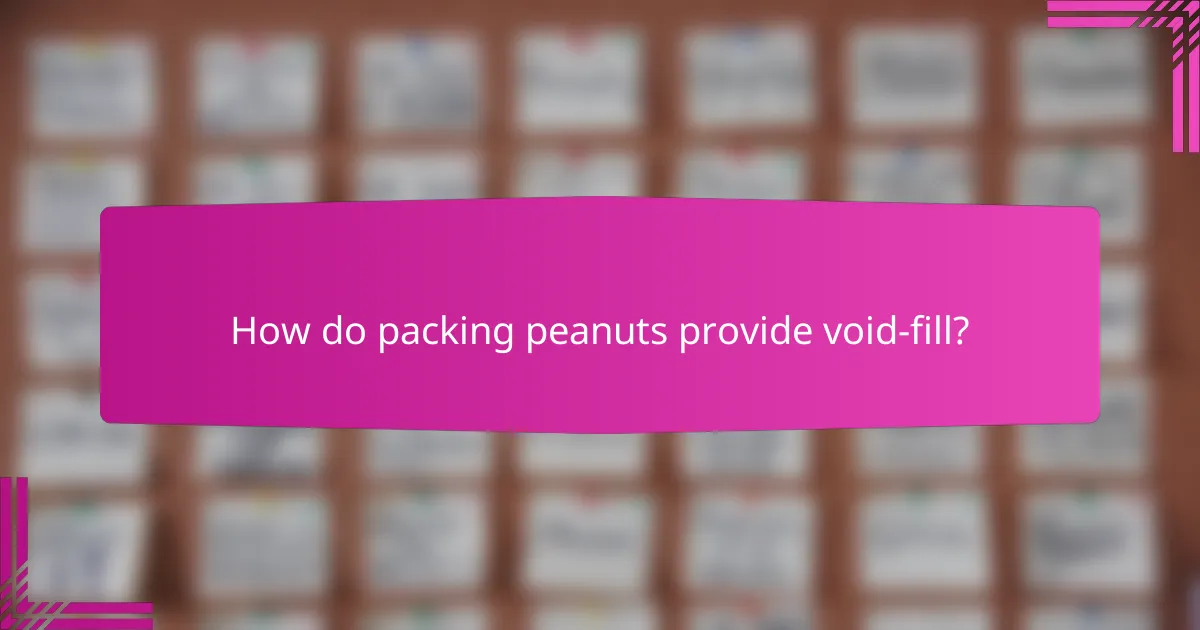
How do packing peanuts provide void-fill?
Packing peanuts serve as an effective void-fill material by occupying empty spaces in shipping boxes, preventing items from shifting during transit. Their lightweight nature and unique shape allow them to conform around products, ensuring a snug fit that minimizes movement.
Lightweight cushioning properties
The lightweight cushioning properties of packing peanuts make them ideal for protecting fragile items. Typically made from expanded polystyrene or biodegradable materials, they are easy to handle and do not add significant weight to shipments, which can help keep shipping costs lower.
When using packing peanuts, consider the volume needed to fill voids adequately. A general rule of thumb is to fill boxes to the brim with peanuts, ensuring that items are completely surrounded for optimal protection.
Protection against damage
Packing peanuts provide excellent protection against damage by absorbing shocks and impacts during transportation. Their structure allows them to distribute weight evenly, reducing the risk of breakage for delicate items like glassware or electronics.
To maximize protection, ensure that packing peanuts completely surround the items being shipped. Avoid leaving gaps, as this can lead to movement and potential damage. For added security, consider combining packing peanuts with other protective materials, such as bubble wrap or foam inserts, for particularly fragile shipments.
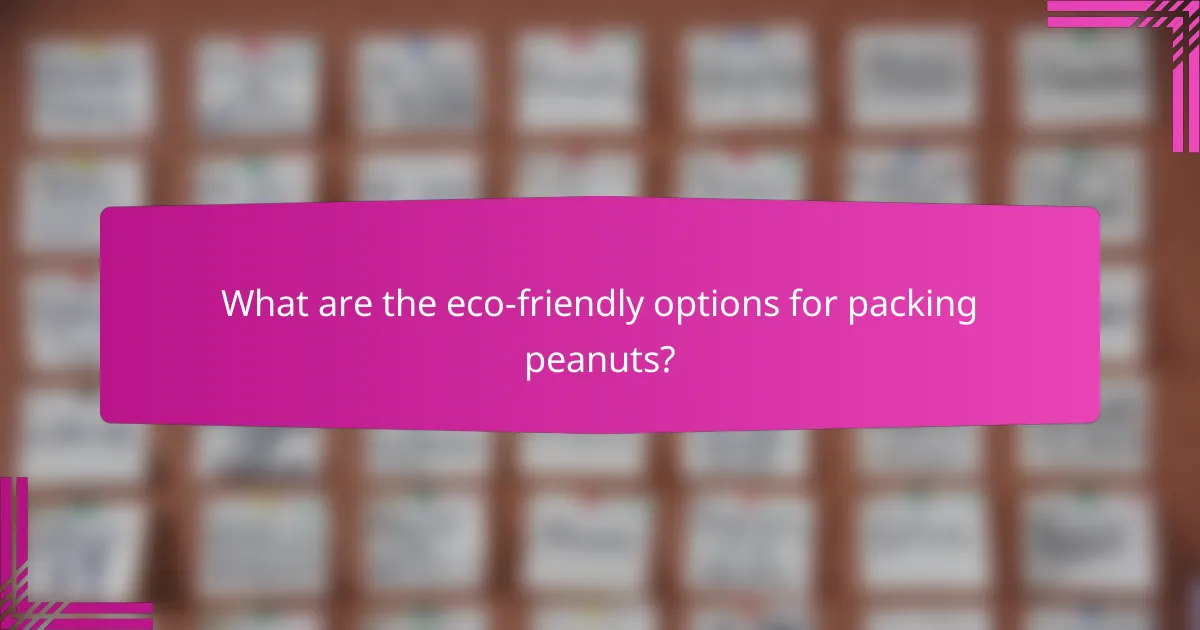
What are the eco-friendly options for packing peanuts?
Eco-friendly options for packing peanuts include biodegradable and recyclable varieties that minimize environmental impact while providing effective void-fill. These alternatives are designed to break down naturally or be reused, making them suitable for sustainable packaging practices.
Biodegradable packing peanuts
Biodegradable packing peanuts are typically made from natural materials like cornstarch or wheat, allowing them to decompose in composting conditions. They break down within a few weeks to months, depending on environmental factors such as moisture and temperature.
When using biodegradable peanuts, ensure they are stored in a dry place to maintain their integrity. They can be disposed of in compost bins or simply dissolved in water, making them a practical choice for eco-conscious consumers.
Recyclable packing peanuts
Recyclable packing peanuts are often made from expanded polystyrene (EPS) or other materials that can be processed and reused. These peanuts can be returned to recycling centers or reused in future shipments, reducing waste and promoting a circular economy.
To recycle packing peanuts effectively, check local recycling guidelines, as not all facilities accept them. Keeping them clean and dry increases their chances of being accepted, so avoid mixing them with non-recyclable materials.
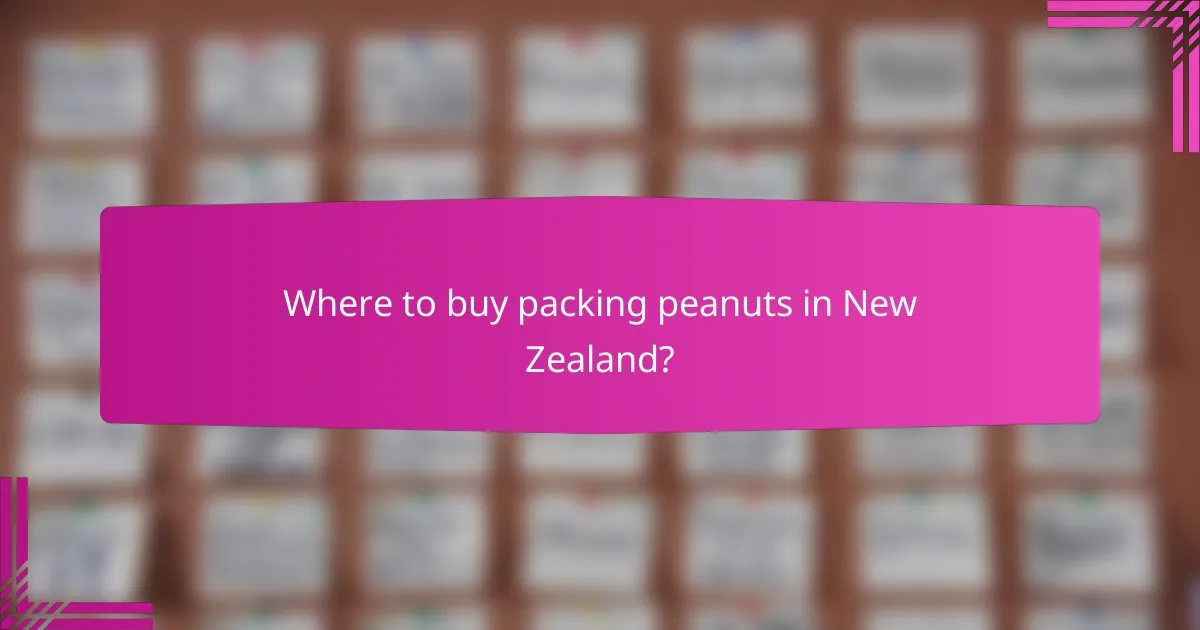
Where to buy packing peanuts in New Zealand?
You can purchase packing peanuts in New Zealand from various local suppliers and online marketplaces. These options provide a range of eco-friendly and lightweight void-fill solutions suitable for shipping and packaging needs.
Local suppliers and retailers
In New Zealand, several local retailers offer packing peanuts, often found in stores specializing in packaging materials or shipping supplies. Look for businesses like OfficeMax or packaging supply stores in your area. They typically stock biodegradable options made from starch or recycled materials.
Additionally, check with local moving companies, as they may sell packing peanuts or offer them as part of their packing services. This can be a convenient way to acquire packing materials while supporting local businesses.
Online marketplaces
Online marketplaces such as Trade Me and eBay are excellent places to find packing peanuts in New Zealand. These platforms often feature various sellers offering different types of packing peanuts, including eco-friendly options. Prices can vary, so compare listings to find the best deal.
Amazon also ships to New Zealand and carries a wide selection of packing peanuts. Be sure to check shipping costs and delivery times, as these can affect your overall purchase experience. Always read product descriptions to ensure you are getting the type of packing peanuts that meet your needs.

How to choose the right packing peanuts?
Choosing the right packing peanuts involves considering their void-fill capabilities, weight, and environmental impact. The best options will provide adequate protection for your items while being lightweight and eco-friendly.
Considerations for shipping
When selecting packing peanuts for shipping, consider the size and weight of the items being shipped. Lightweight peanuts can reduce shipping costs, especially for larger packages. Additionally, ensure that the peanuts provide sufficient cushioning to prevent damage during transit.
Evaluate the void-fill efficiency of different types of packing peanuts. For instance, biodegradable options may take up more space but offer environmental benefits. Always test the packing materials with your specific items to find the right balance between protection and cost.
Environmental impact
The environmental impact of packing peanuts varies significantly between types. Traditional Styrofoam peanuts are not biodegradable and can contribute to landfill waste. In contrast, biodegradable packing peanuts made from cornstarch or recycled paper decompose naturally and are a more sustainable choice.
Consider the lifecycle of the packing peanuts you choose. Eco-friendly options may have a higher initial cost but can reduce your overall environmental footprint. Look for certifications or labels that indicate the product meets environmental standards, ensuring your choice aligns with sustainability goals.
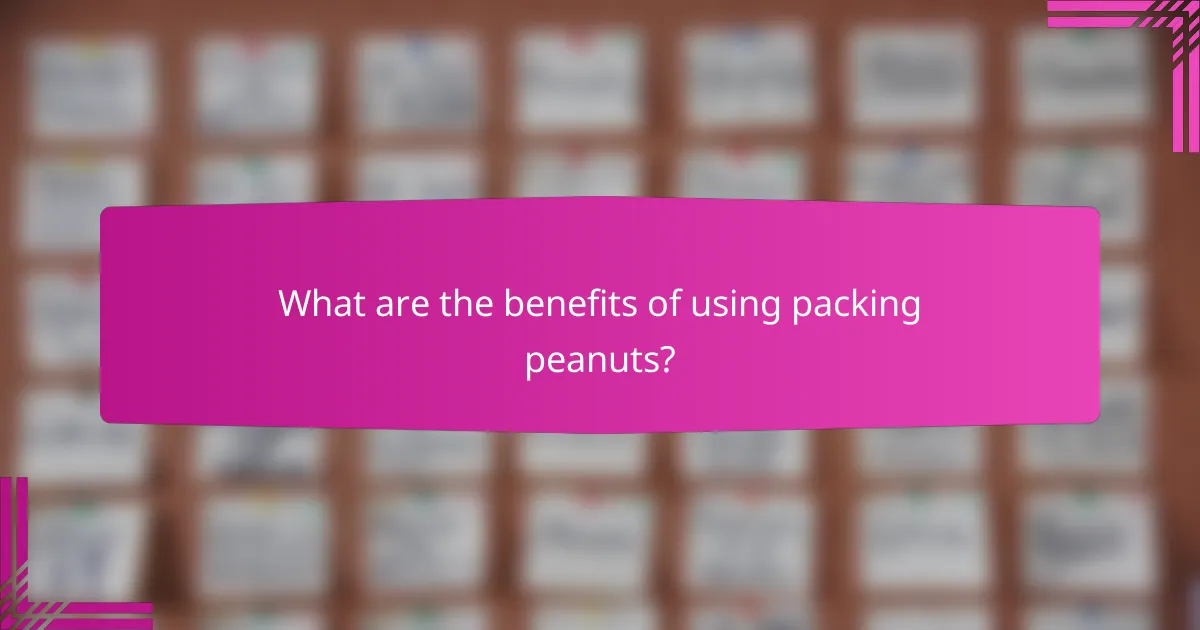
What are the benefits of using packing peanuts?
Packing peanuts offer several advantages, including their lightweight nature, cost-effectiveness, and eco-friendly options. They effectively fill voids in packaging, ensuring that items remain secure during transit.
Cost-effectiveness
Packing peanuts are generally an affordable packaging solution, often costing less than other materials like bubble wrap or foam inserts. Their lightweight design also helps reduce shipping costs, as carriers typically charge based on weight.
When considering bulk purchases, packing peanuts can provide significant savings, especially for businesses that ship frequently. Many suppliers offer competitive pricing, making them a budget-friendly choice for both small and large shipments.
Versatility in packaging
Packing peanuts are highly versatile and can be used for various items, from fragile glassware to electronic devices. They conform to the shape of the products they protect, providing cushioning and preventing movement during shipping.
Additionally, packing peanuts can be combined with other materials for enhanced protection. For example, they can be used alongside cardboard boxes or bubble wrap to create a multi-layered defense against damage.
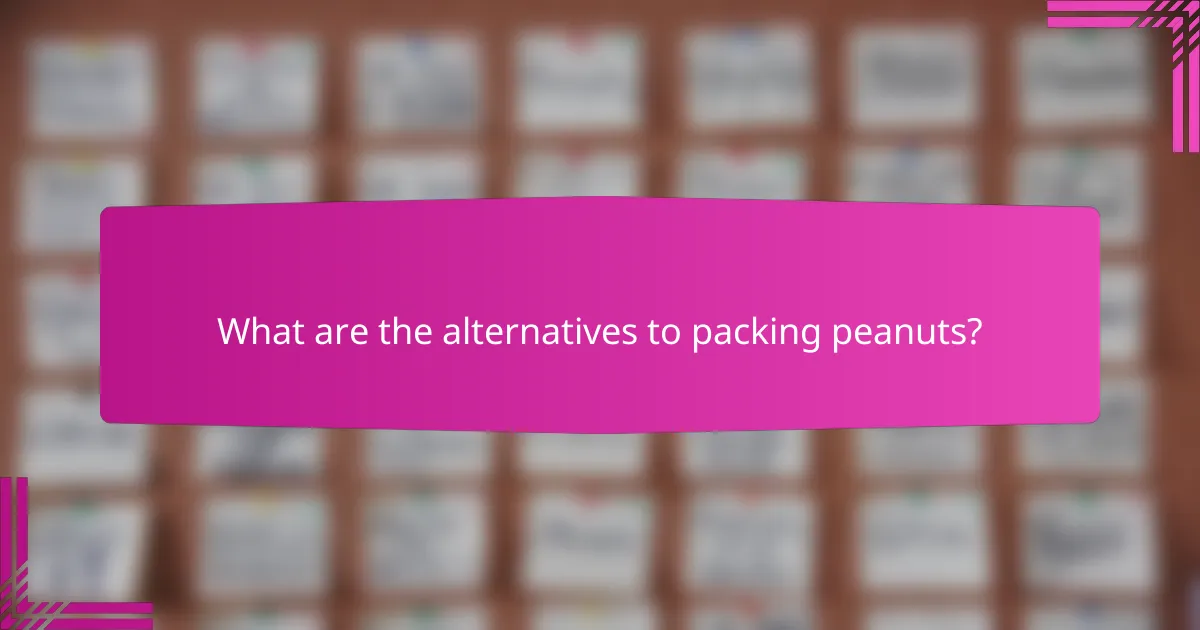
What are the alternatives to packing peanuts?
Alternatives to packing peanuts include various materials that provide void-fill and cushioning for shipping. These options can be lightweight, eco-friendly, and effective in protecting items during transit.
Bubble wrap
Bubble wrap is a popular alternative to packing peanuts, known for its air-filled bubbles that provide excellent cushioning. It is lightweight and can easily conform to the shape of the items being shipped, reducing movement during transport.
When using bubble wrap, consider the size and fragility of the items. For delicate products, multiple layers may be necessary to ensure adequate protection. Additionally, bubble wrap is recyclable, making it a more eco-friendly option compared to traditional packing peanuts.
Paper-based fillers
Paper-based fillers, such as crumpled paper or shredded cardboard, serve as effective void-fill materials. These options are biodegradable and can be sourced from recycled materials, making them environmentally friendly choices.
When selecting paper-based fillers, ensure they are dense enough to prevent items from shifting during shipping. They can be used alone or in combination with other materials for added protection. Consider using unprinted, recycled paper to maintain sustainability while providing cushioning for your packages.
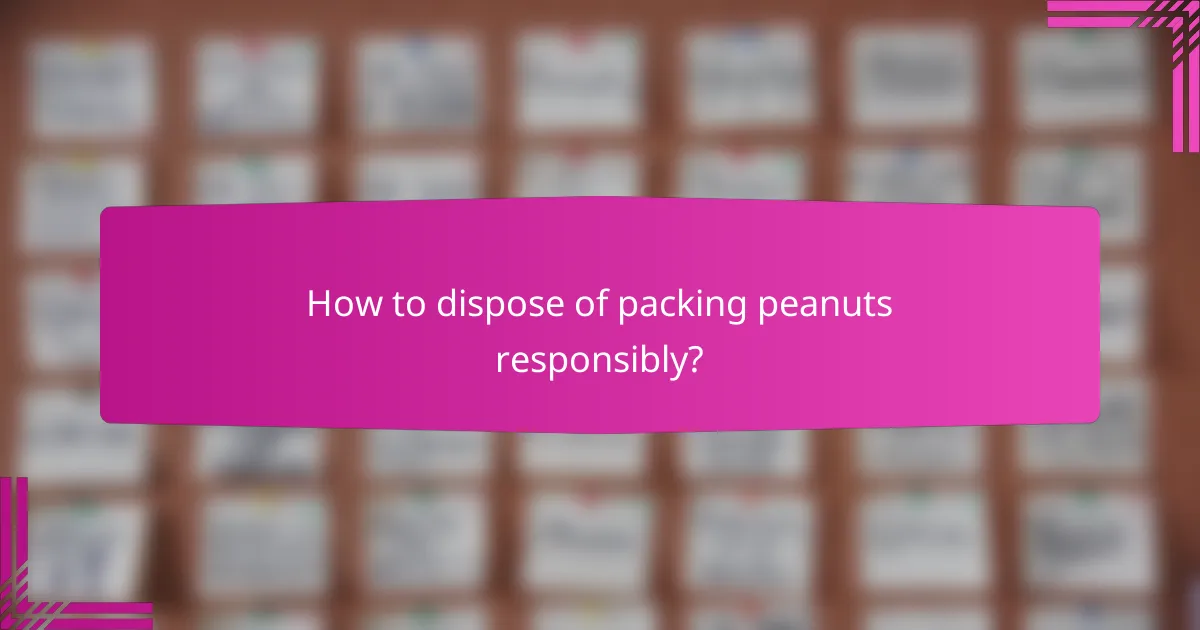
How to dispose of packing peanuts responsibly?
To dispose of packing peanuts responsibly, consider recycling or reusing them whenever possible. Many packing peanuts are made from polystyrene, which can be recycled, while biodegradable options can be composted or returned to manufacturers.
Recycling options
Recycling packing peanuts can significantly reduce waste. Many local recycling centers accept polystyrene peanuts, but it’s essential to check with your local facility first. Some stores, especially shipping and packaging retailers, may also have drop-off programs for packing materials.
When recycling, ensure that the peanuts are clean and dry. Contaminated materials may not be accepted, which can lead to additional waste. If your area lacks recycling options, consider contacting manufacturers who may take back their products for recycling.
